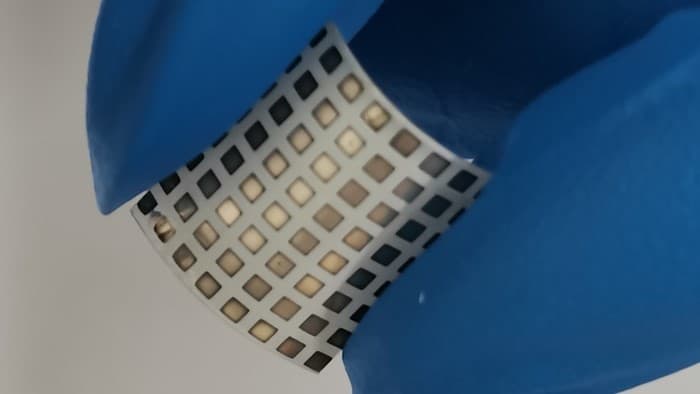
Camels are adapted for life in arid environments and are therefore very good at finding sources of drinking water. Now, Weiguo Huang at the Fujian Institute of Research on the Structure of Matter, Chinese Academy of Sciences and colleagues have developed a humidity sensor that is inspired by the structure and properties of the nose of a camel. They say that their device can detect changes in humidity in several environments including industrial exhausts and nearby to human skin.
Existing humidity sensors can be limited in their use. Some are sensitive but not durable – and others are the opposite. Another problem is that very sensitive detectors can be tricky to deploy outside because they are affected by sunlight – something that doesn’t bother camels in the least.
The noses of camels have narrow, scroll-like passages that contain mucus that absorbs water. The team created a porous polymer structure that mimics the high surface area of those passages. The mucus was replaced with moisture-attracting molecules called zwitterions, which act as a dielectric in a capacitor. Changes in humidity are detected as changes in capacitance.
Because the device can detect moisture emitted by human skin, the team reckons that it could be used to create touchless computer interfaces. The sensor is described in ACS Nano.
There are 40 billion billion black holes in the universe, according to new research done by Alex Sicilia at Italy’s Scuola Internazionale Superiore di Studi Avanzati and colleagues. This means that about 1% of the normal matter in the universe is bound up in black holes – something that team says is a “remarkable amount”.
In the above video, colleague Lumen Boco explains how the team came up with that astonishing number. Much more about the research can be read in an open access paper in The Astrophysical Journal.
Finally, I really enjoyed the video below from the American Chemical Society about the electron. It is at a pretty basic level, but the presenter does a great job of explaining why our existence relies on the fermionic nature of electrons.
